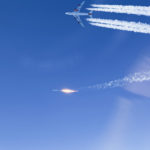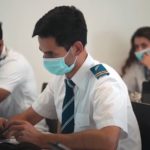New regulations for testing the next generation of supersonic jets were finalised by the US Federal Aviation Administration earlier this month, in an attempt to define and streamline permissions around the development of fast flight.
The regulations clarify procedures for obtaining authorisations for flight tests beyond Mach 1. The new guidance has been welcomed by companies including Boom and Aerion who are currently working on supersonic aircraft prototypes.
The ruling will streamline and simplify access to information needed for special flight authorisation applications and will designate the FAA programme office to process applications. The FAA will also be working towards setting broader new standards for aircraft.
Transportation Secretary Elaine L Chao described the action as “a significant step toward reintroducing civil supersonic flight and demonstrates the department’s commitment to safe innovation.”
Aerion hope to assemble prototype by 2023
The FAA rules will enable Aerion to fly its AS2 business jet over land in addition to the already planned flights over the sea. This week, FINN takes a look back to an interview with Dr Richard Tracy, senior vice president & chief technology officer of Aerion, who gave his rundown on some of the biggest challenges for supersonic air travel.
Aerion has already completed wind tunnel testing on its design and hopes to begin assembling a prototype in 2023. Boom plans to start the flight testing campaign its prototype XB-1 aircraft later this year. Commercial space flight company Virgin Galactic is also set to develop a supersonic aircraft.
Supersonic boom driven by new technologies
The new generation of supersonic jets is being driven by new technologies within engine development, electronics and the introduction of lighter weight carbon-fibre structures. Developers are also working on ways to make the new models quieter as the loud sonic boom of existing models led the FAA to prohibit commercial supersonic flight over land.
“The FAA supports the new development of supersonic aircraft as long as safety parameters are followed,” added FAA Administrator Steve Dickson. “The testing of supersonic aircraft at Mach 1 will only be conducted following consideration of any impact to the environment.”
The FAA will be working alongside international regulators, as well as developing a separate rulings regarding takeoff and landing noise certification standards.

